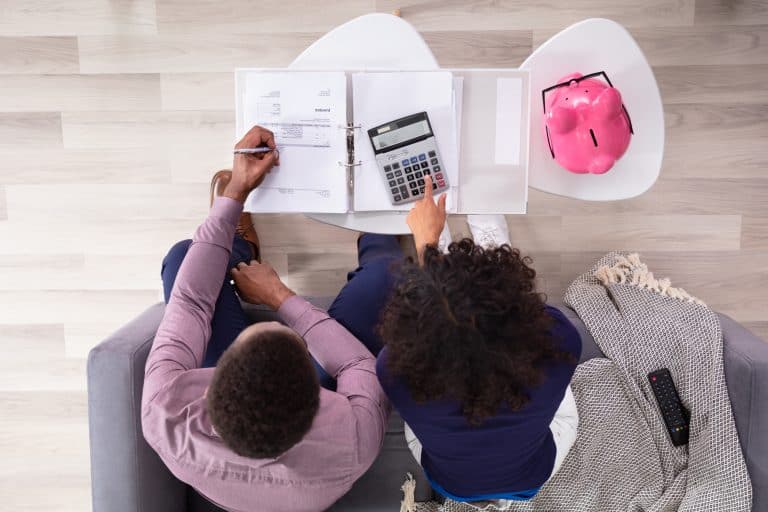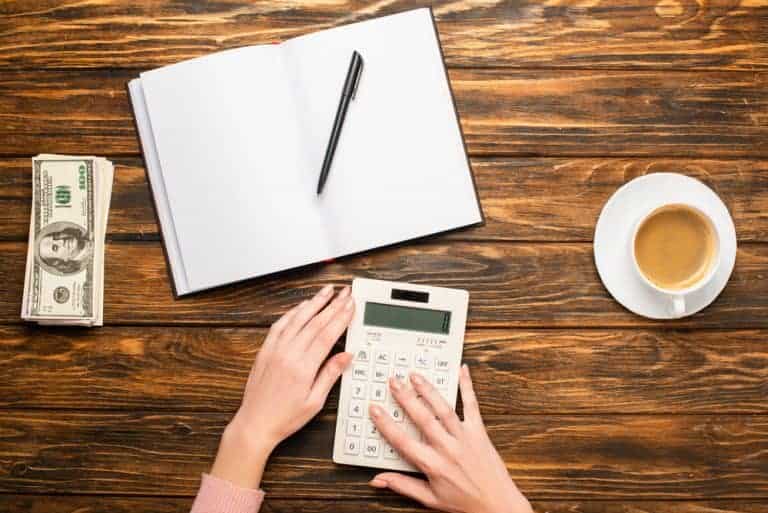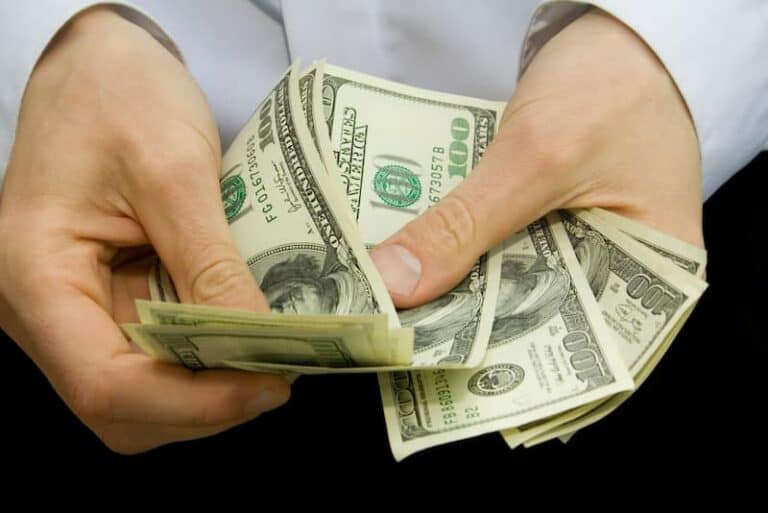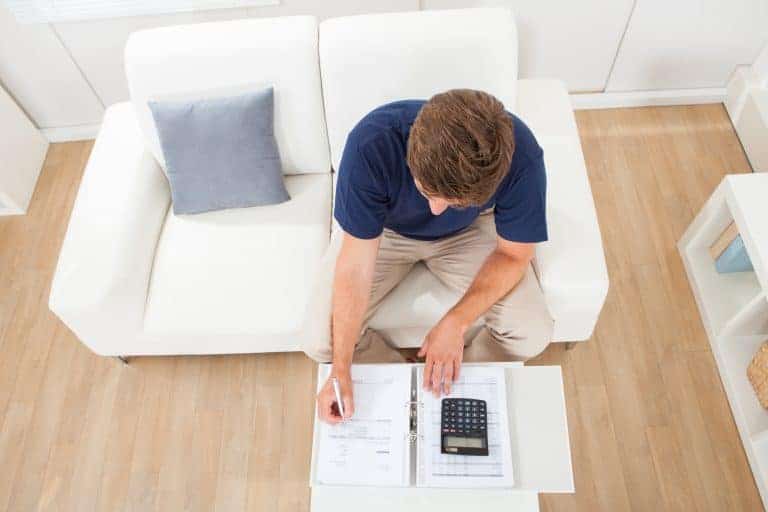Checks have become an outdated form of payment for most people. That is until your landlord requires one and they need to pay their rent or utilities but don’t know how to write a check.
Save yourself some time and embarrassment and learn step-by-step the correct way to write a check in the article below. You’ll also understand how to use online checks and create your own.
How to write a check
To write a check, you need to include the date, amount, payee, signature, and written statement for the amount of the check. There’s also a line for adding a memo to the check for better bookkeeping purposes.
The memo isn’t a required part of a check for the bank to validate the funds. You can leave this section blank and still be able to use it at a bank.
Follow the steps below to see the correct way to write a check.
FYI: If you need to write a check but don’t have any on hand, you can easily order some online from Checks In The Mail.
They’re just as secure as checks you get from your bank, have a huge range of designs…and you can get 20% off your order at that link.
1. Date your check
The bank will use the date you provided to validate any claims about when the check was given and when the check was cashed. This also helps you keep track of the date that the money was sent to someone in case you need to reference it later.
2. Fill out the payee information
The payee section of a check is needed so that the bank knows who is receiving the funds. Always fill out this section with the exact name of the person or company you are sending the payment to. Incorrect names could lead to the check being rejected.
Related: Can Someone Else Deposit a Check For Me?
3. Write the amount
The numerical value is how much money you are giving to the receiver of the check. The bank uses this number to know exactly how much to pull from your account.
Keep in mind that if you write a check without cents, you don’t need to include zeros when writing.
4. Write the amount in words
Banks require you to write out the total amount in words as a way of confirmation before issuing the funds. You shouldn’t write a check with cents though. Instead, use numbers to convey the amount of change.
But be careful in writing since there are only a few options if you need to fix a mistake on a check.
5. Sign the check
The person who writes the check is responsible for it. Signing the check lets the bank know you have confirmed the payment is valid. Banks won’t release the funds if the check isn’t signed.
6. Add a memo
Banks don’t require a memo to be added to release the funds, but adding a memo can help with your bookkeeping, such as if you’re trying to keep track of bills and payments. This is why you should try to keep the description as apt as possible.
How do you write a check for $1000?
As an example of how this works in practice, let’s show you how to write a check for $1,000:
- Insert the date
- Add the full name of the payee, whether that’s an individual or a company
- Write the amount in numbers. Given that you’re looking to write a check without cents in this example, it’s best to add a line after the amount so no one can change the figure. In this case, that would be like this: $1000—
- Write the amount in words. As the word “dollars” is usually preprinted on a check, you only need to write the actual amount. However, as we’ll explain more below, you should write a check with cents as a fraction in this section. In this case, this will read: One thousand and 00/100.
- Sign the check to validate it. This lets the bank know that you’ve authorized the check and that the payment is valid.
- Include a memo if you want. This isn’t required by the bank, but it can be helpful for your own record keeping by letting you know what the payment is for.
Can you write a check by hand?
You can write a check by hand if using a pen when filling out all the required information. Pencil can be altered and is not a valid form of writing when filling out a check.
Individuals write more hand-written checks than organizations or businesses. They use checks in order to keep better track of their expenses and not have all their funds taken at the same time.
Large organizations often write too many checks for them to be hand-written and will end up printing checks. You’re also unlikely to find a hand-written certified check.
Although hand-writing a check may take longer than online checks, you are given physical receipts of your check you can keep with you. If you have trouble organizing your online files, having a physical receipt makes bookkeeping easy to track.
And don’t worry if you realize you’re using a check with an old address, as the check itself is still valid.. In fact, it happens relatively frequently for those who only use checks from time to time.
Things to keep in mind when writing a check by hand
One point to note is that hand written checks take longer to process and banks don’t withdraw funds from an account until the check is cashed. In particular, when you handwrite a check to an organization it may take several days to process, but when you give a hand-written check to an individual, they have up to 180 days to cash it.
This process makes it easier for you to write checks throughout a month and still have a chance to replace the money before it’s taken out of your account. After all, if you’ve written a check to an individual, they could take months before cashing out your funds.
That said, if a deposit is pending, they can’t use the money which is why most people will try to cash their checks as quickly as possible.
At the same time, if they do wait before depositing it, this could turn into a bad situation if your liquid net worth is a bit low at the moment they cash the check, so that you don’t have the funds available when they are withdrawn. At the time you wrote the check you may have had the funds, but you will need to keep the amount of the check in your account until the check is actually cashed.
If you hand-write a check over the weekend, most banks will be closed. You won’t see the funds being taken from your account until the banks have had time to catch up on processing all their transactions.
Can I write a check from online?
You can write an electronic check, or e-check, online if you have your account number and routing number available. Most banks and online payment sites allow you to pay your bills by writing an e-check.
Writing an online check when paying your bills won’t look in any way like a paper check. It will look like most online forms that you fill out where specific fields are required before processing the transaction.
Because you will be filling out sensitive information when writing a check online, you need to ensure the website is secure. Sites that aren’t secure leave your information vulnerable to hackers who could steal this information.
If you don’t have your routing number or account number, you won’t know how to write a check online. Contact your bank or sign in to your online banking portal to find your routing and account numbers.
Also keep in mind that writing a check from online is different from ordering a check online, which involves having physical checks sent to your house. If that’s what you’re looking to do, check out (pun intended) Checks In The Mail.
How do you write amounts in words on a check?
To write amounts in words on a check, you need to spell out every word in the total amount except for the change. Any leftover amount in cents can be written numerically as a fraction.
In particular, make sure you do the following.
1. Spell out the dollar amount
No matter if the amount is a few dollars or a few thousand, you have to spell out each individual number in the total amount.
Let’s say you want to pay a mortgage bill with a check for $2546.47. We’ll use a unique number so you can see what it all should look like written out. Start with the number on the left and spell it out almost exactly how you would say it to another person.
For example, you would write: two thousand five hundred forty six.
Don’t include the word “and” in the middle of any dollar amounts when you are writing your words on a check. The “and” will be added after your dollar amount, when you introduce the cents.
2. Write your cents
You will write the cents as a fraction. In the example above, your cents would be 47/100. This represents how much change you have before reaching a full dollar.
Because there isn’t enough room on your check line to write out the entire cent amount along with your dollars, you can abbreviate it. If you don’t have any change to add in this section, you will still include the fraction except you will put zeros at the top.
Make sure your written amount and your numerical amount match exactly, or the bank could send your check back.
3. Leave no room after the amount
Your check will go through several hands before it is actually processed and the funds are taken from your bank account.
To prevent fraud or malicious activity, put a line that goes from the end of your writing to the end of the field. You don’t want anyone to rewrite that section or add more numbers to increase the amount.
This method is helpful when you write checks to individuals you don’t know. If a bank sees suspicious activity on the check, like crossed-out markings or mistakes in writing, they could possibly refuse the check.
Keeping yourself protected by adding markings that let the bank know what you intended to write could keep your account from being taken advantage of.
Can any piece of paper be a check?
While, technically speaking, any piece of paper can be a check, it’s unlikely to be accepted by the recipient bank, let alone the recipient themselves. This is because checks are printed on special paper by banks which have certain security measures for verification purposes.
By having these measures in place, it ensures that the bank can be sure the check is original and not made by someone with malicious intent.
(Which means it’s much easier to use an actual check for your payment rather than any random piece of paper. If you don’t have any checks on hand though, I’d recommend taking a look at Checks In The Mail – you’ll even get 20% off your order at that link!)
Only checks that have been authorized by the account holder can be written. Accounts may be authorized online, at a teller window, or over the phone.
Now, you can write a check on any piece of paper and use it as a form of payment if you can convince someone it is worth a specific amount. The only problem is finding someone who would actually cash that check.
Most institutions would not accept that as a form of payment.
Can you draw your own check?
While it’s legally permissible to draw your own check, you won’t find success in doing so unless you use computer software and have purchased blank checks. This is because banks require specific elements that you need to include in your checks for them to go through a process of validation.
However, if you are able to meet all the requirements met by the bank institutions when you print your own checks from home, you will be able to use them to purchase goods.
You can find blank checks that meet minimum requirements at office supply stores or online. These checks fit into home printers so you can fill out the information and print a check for yourself.
In the past, magnetic ink was used by banks and automatic check reader machines to verify your account number and routing number. Even though banks still use magnetic ink on their checks, the reader machines no longer require magnetic ink when verifying.
Using your home printer will work fine when you draw your own checks. Make sure you have the following items when printing checks from home:
- Account number
- Routing number
- Date
- Amount in words and numbers
- Signature of account holder





